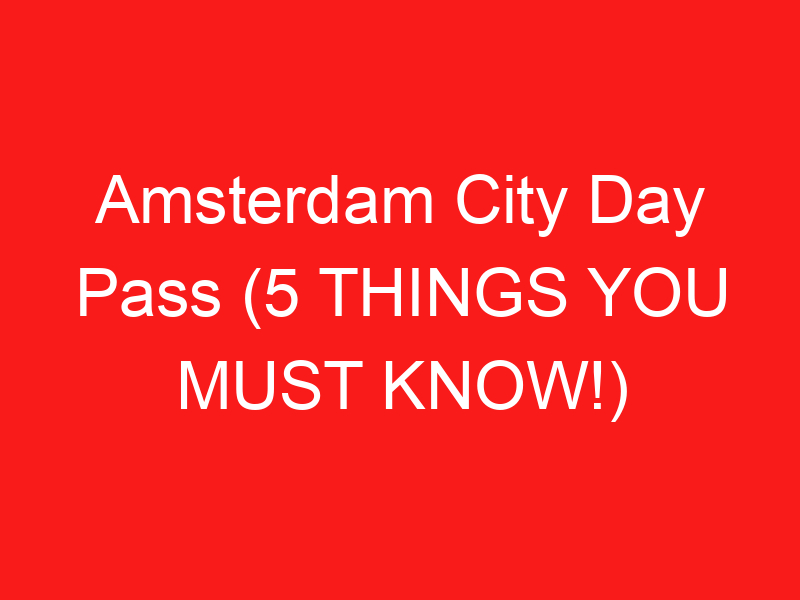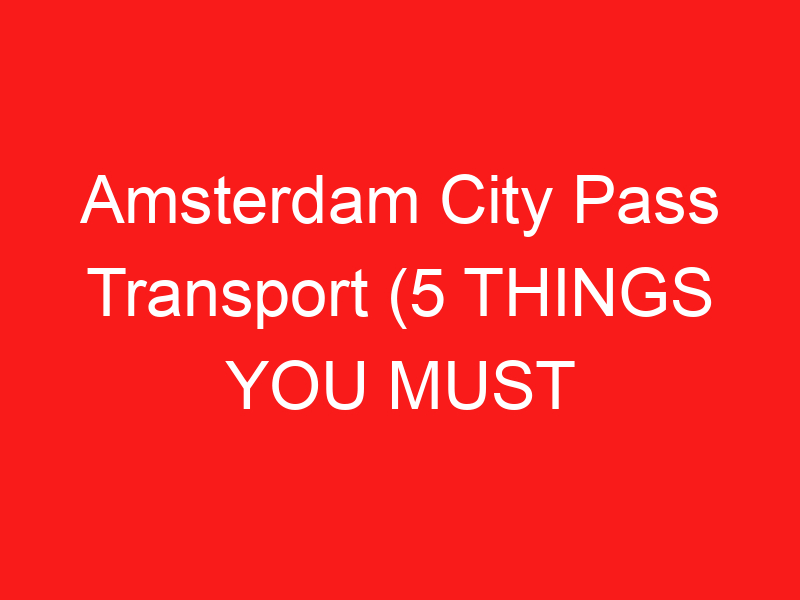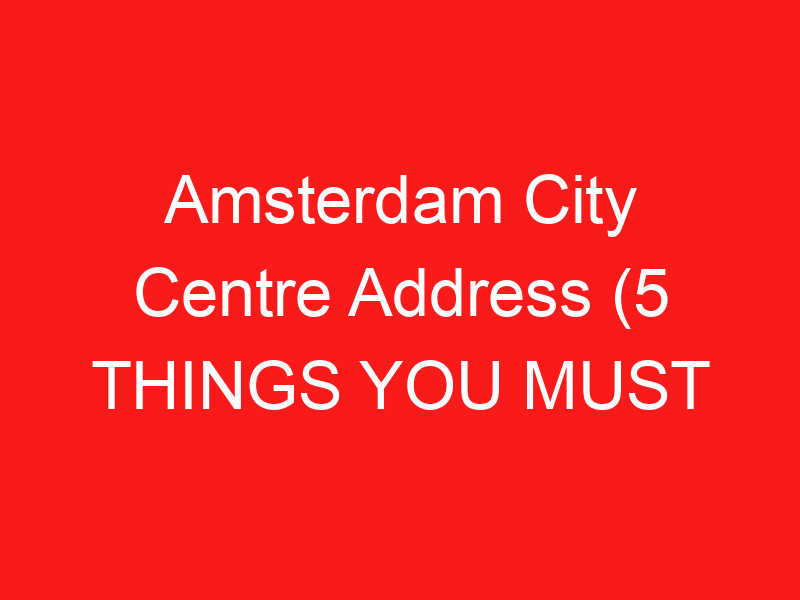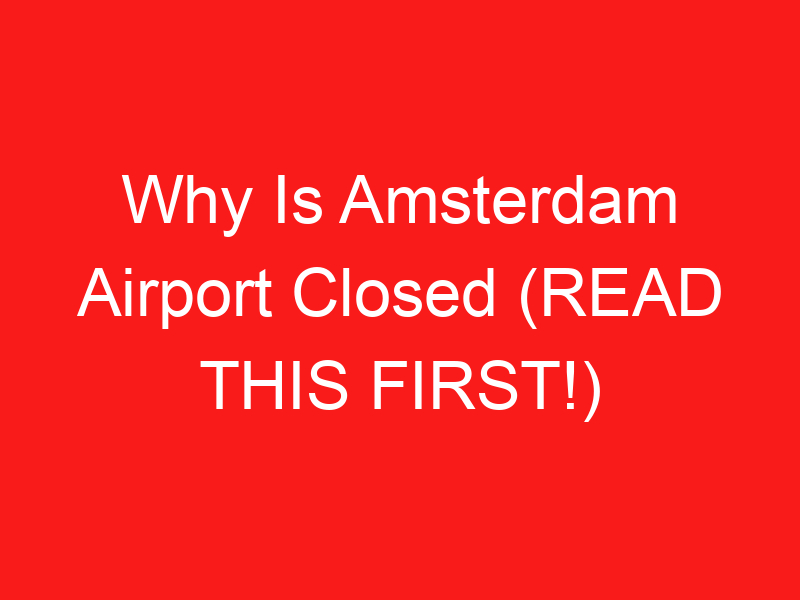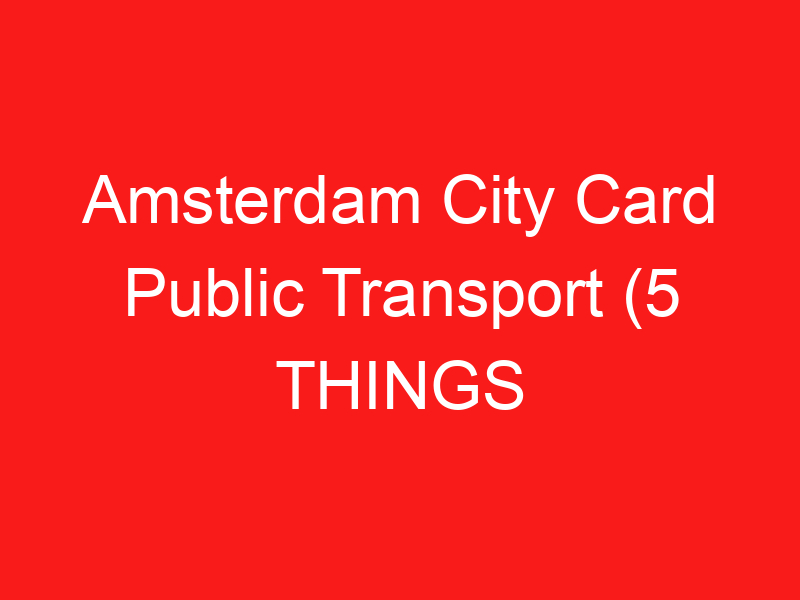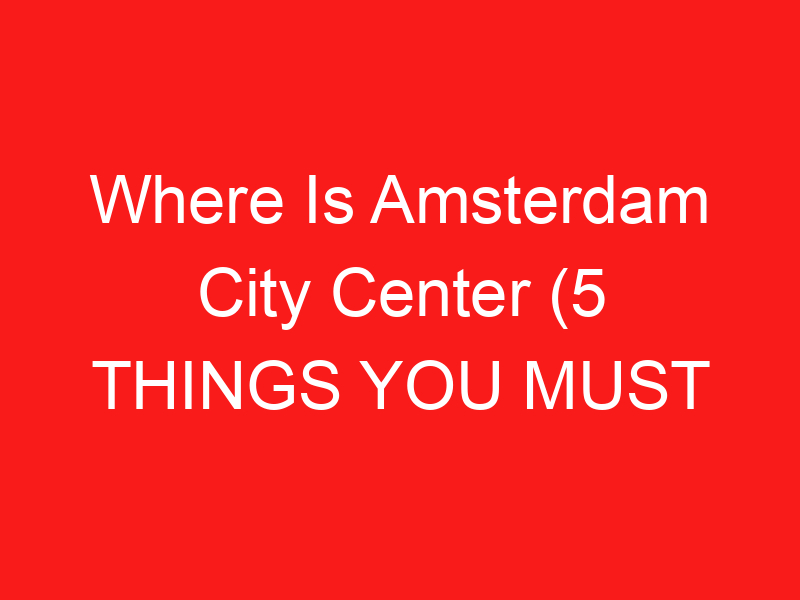Amsterdam City Code (5 RZECZY, KTÓRE MUSISZ WIEDZIEĆ!)
Amsterdam, tętniąca życiem stolica Holandii, is a city known for its rich history, Zachwycające kanały, i żywa kultura. Jednak, behind its picturesque facade lies an intricate system of regulations and codes that govern the city’s operations, particularly the Amsterdam City Code. This article will dive deep into five essential aspects of the Amsterdam City Code that every resident and visitor should know.
Whether you’re planning a visit or considering a longer stay, understanding the city’s regulations can significantly enhance your experience. From zoning laws to public safety regulations, knowing these details can help you navigate the city more effectively. Więc, let’s explore the Amsterdam City Code and uncover five crucial things you must know!
1. Understanding the Amsterdam City Code
The Amsterdam City Code, lub “Gemeentewet,” is a comprehensive set of regulations that govern the city’s operations. It is essential for maintaining order and ensuring that the city runs smoothly. The code encompasses various aspects of urban life, including zoning laws, public safety regulations, and environmental policies.
One of the most important features of the Amsterdam City Code is its adaptability. The city is constantly evolving, and so are the needs of its residents. As such, the code is regularly updated to reflect changes in societal norms, economic conditions, and environmental considerations.
For example, the code includes specific regulations concerning the preservation of historical sites, which are abundant in Amsterdam. This ensures that the city’s unique character is maintained while allowing for modern development. Dodatkowo, the code addresses public health issues, such as waste management and sanitation, which are crucial in a densely populated urban area.
Understanding the Amsterdam City Code is vital for anyone living in or visiting the city. It not only provides a framework for governance but also shapes the daily experiences of residents and tourists alike. Familiarity with these regulations can help you make informed decisions about where to live, how to conduct business, and how to engage with the community.
2. Zoning Laws and Urban Planning
One of the most significant components of the Amsterdam City Code is its zoning laws. These regulations dictate how land can be used within the city and are crucial for urban planning. Zoning laws help to organize the city’s layout, ensuring that residential, commercial, and industrial areas are appropriately designated.
In Amsterdam, zoning laws are particularly important due to the city’s unique geography and historical context. The city is built on a network of canals, which limits the available land for development. As a result, the city has implemented strict zoning regulations to prevent overcrowding and maintain the integrity of its neighborhoods.
Na przykład, certain areas of the city are designated as “residential zones,” where only housing is permitted. Other areas are classified as “mixed-use zones,” allowing for a combination of residential and commercial activities. This zoning approach helps to create vibrant neighborhoods where people can live, work, and play in close proximity.
Ponadto, the Amsterdam City Code includes provisions for green spaces and parks, which are essential for the city’s quality of life. These regulations ensure that residents have access to recreational areas, promoting physical activity and community engagement. The city’s commitment to sustainable urban planning is evident in its efforts to integrate nature into the urban environment.
Understanding zoning laws is crucial for anyone looking to invest in property or start a business in Amsterdam. These regulations can significantly impact property values, business operations, and overall community dynamics. Being aware of the zoning classifications in different neighborhoods can help you make informed decisions about where to live or establish a business.
3. Public Safety Regulations
Public safety is a top priority for the Amsterdam City Code. The city has implemented various regulations to ensure the safety and well-being of its residents and visitors. These regulations cover a wide range of issues, including traffic management, emergency services, and public health standards.
One of the most notable aspects of public safety regulations in Amsterdam is the city’s approach to traffic management. With a high population density and a significant number of cyclists, the city has developed a comprehensive traffic system that prioritizes safety. This includes dedicated bike lanes, pedestrian zones, and strict enforcement of traffic laws.
In addition to traffic regulations, the Amsterdam City Code outlines the responsibilities of emergency services. The city has a well-coordinated emergency response system, ensuring that help is available when needed. This includes police, fire, and medical services, all of which work together to maintain public safety.
Public health is another critical area addressed by the Amsterdam City Code. The city has established regulations for food safety, sanitation, and waste management to protect residents’ health. These regulations are enforced through regular inspections and public awareness campaigns, ensuring that businesses comply with health standards.
Understanding public safety regulations is essential for anyone living in or visiting Amsterdam. Being aware of traffic rules, emergency procedures, and health regulations can help you navigate the city safely and responsibly. Ponadto, it fosters a sense of community, as residents work together to uphold safety standards.
4. Environmental Policies and Sustainability
Amsterdam is renowned for its commitment to sustainability and environmental protection. The Amsterdam City Code includes a range of policies aimed at promoting eco-friendly practices and reducing the city’s carbon footprint. These regulations are vital for preserving the city’s natural beauty and ensuring a healthy environment for future generations.
One of the most significant aspects of Amsterdam’s environmental policies is its focus on reducing air pollution and promoting clean energy. The city has implemented strict regulations on emissions from vehicles and industries, encouraging the use of electric transportation and renewable energy sources.
Dodatkowo, the Amsterdam City Code promotes green building practices. New developments are required to meet specific sustainability standards, including energy efficiency and the use of environmentally friendly materials. This not only reduces the environmental impact of construction but also enhances the quality of life for residents.
Recycling and waste management are also key components of the city’s environmental policies. Amsterdam has established a comprehensive waste separation system, encouraging residents to recycle and reduce waste. The city’s commitment to sustainability is evident in its efforts to create a circular economy, where resources are reused and recycled rather than discarded.
Understanding the environmental policies outlined in the Amsterdam City Code is crucial for anyone living in or visiting the city. By being aware of these regulations, you can contribute to the city’s sustainability efforts and make informed choices that support a healthier environment.
5. Community Engagement and Participation
The Amsterdam City Code emphasizes the importance of community engagement and participation in governance. The city encourages residents to take an active role in decision-making processes, ensuring that their voices are heard and considered.
One of the ways the city promotes community engagement is through public consultations and forums. These events allow residents to provide feedback on proposed policies, share their concerns, and suggest improvements. This participatory approach fosters a sense of ownership among residents and strengthens the community.
Dodatkowo, the Amsterdam City Code includes provisions for neighborhood councils, which are composed of local residents. These councils play a crucial role in addressing community issues and advocating for residents’ needs. They serve as a bridge between the city government and the community, ensuring that local voices are represented in decision-making processes.
Ponadto, the city supports various initiatives aimed at enhancing community cohesion. This includes funding for local projects, wydarzenia kulturalne, and social programs that bring residents together. By fostering a strong sense of community, Amsterdam enhances the quality of life for all its residents.
Understanding the importance of community engagement in the Amsterdam City Code is vital for anyone living in the city. By participating in local initiatives and voicing your opinions, you can contribute to the betterment of your community and help shape the future of Amsterdam.
Frequently Asked Questions About Amsterdam City Code
| Pytanie | Odpowiedź |
|---|---|
| What is the Amsterdam City Code? | The Amsterdam City Code is a set of regulations that govern various aspects of urban life in Amsterdam, including zoning, public safety, and environmental policies. |
| How often is the Amsterdam City Code updated? | The Amsterdam City Code is regularly updated to reflect changes in societal norms, economic conditions, and environmental considerations. |
| What are the main areas covered by the Amsterdam City Code? | The main areas covered include zoning laws, public safety regulations, environmental policies, and community engagement initiatives. |
| How do zoning laws affect property owners in Amsterdam? | Zoning laws dictate how land can be used, impacting property values and business operations for property owners in specific areas. |
| What measures does Amsterdam take to ensure public safety? | Amsterdam has strict traffic regulations, a coordinated emergency response system, and public health standards to ensure safety. |
| How does the city promote sustainability? | The city promotes sustainability through strict emissions regulations, green building practices, and comprehensive waste management programs. |
| How can residents participate in local governance? | Residents can participate through public consultations, neighborhood councils, and local initiatives aimed at enhancing community engagement. |
Konkluzja
Podsumowanie, understanding the Amsterdam City Code is essential for anyone living in or visiting this beautiful city. From zoning laws and public safety regulations to environmental policies and community engagement, the code shapes the daily experiences of residents and visitors alike.
By familiarizing yourself with these five crucial aspects of the Amsterdam City Code, you can navigate the city more effectively and contribute to its vibrant community. Whether you’re a long-term resident or a first-time visitor, knowledge of these regulations will enhance your experience in Amsterdam, allowing you to enjoy all that this remarkable city has to offer.








